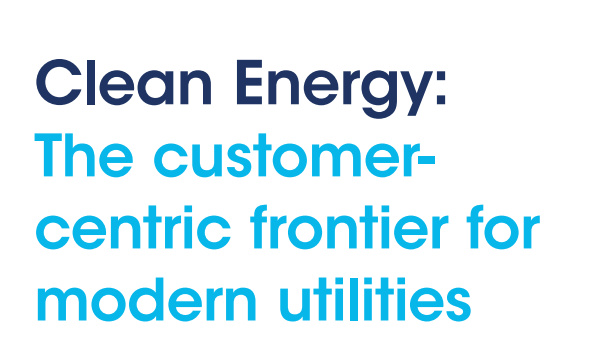Three ways sustainability tech is helping businesses meet climate goals
Adoption of even simple sustainability tech can cut costs and reduce carbon emissions, while AI and IIoT can enable more advanced green transformations


Technology can play a significant role in helping businesses improve their performance, including when it comes to achieving sustainability goals. Better tech doesn’t necessarily come with a higher carbon footprint and in many cases, the most sophisticated solutions are those that can help a business to permanently clean up its act.

The best-performing organizations around the globe are 58% more likely to have adopted hybrid cloud tools for ESG monitoring, and 33% more likely to have made significant progress with AI to analyze the resulting data, according to a report by the IBM Institute for Business Value (IBV).
This type of approach is helping organizations overcome a major legacy issue, inadequate or siloed data. By creating a single platform that unifies storage and data analytics, it’s possible to better measure sustainability performance and identify areas for improvement.
Of course, sustainability goals require huge strategic shifts and an all-hands approach to reining in actions that are harmful to the climate. But when it comes to the tools at hand to help, there are a number of ways in which sustainability tech is already helping businesses hit targets and cut costs in the process.
To date, there’s been a big gap between talk and action. While 95% of those questioned by IBV had operational ESG goals, only 10% had made significant progress toward meeting them. At best, goals are being missed; at worst, companies are engaged in greenwashing and not properly engaging with sustainability targets.
1. Improving efficiency with "low-hanging fruit"
More can always be done to improve sustainability at a corporate level, but this often requires significant investments. While leaders might already see their finances as stretched thin, they must also recognize that sustainability investments generate value in their own right. Data gathered for ESG purposes can be analyzed to provide tangible performance improvements, especially in the environmental domain, while sustainability tech overlaps with systems firms are already seeking out.
Gartner’s Emerging Technology Impact Radar identifies 26 important technologies and trends for environmental sustainability. These included asset optimization solutions, which go hand in hand with Industrial Internet of Things (IIoT) sensors that monitor energy consumption, room temperatures, and air quality.
Sign up today and you will receive a free copy of our Future Focus 2025 report - the leading guidance on AI, cybersecurity and other IT challenges as per 700+ senior executives
“These are areas of low-hanging fruit – some tech providers can achieve up to 55% energy savings for adopters,” says Annette Zimmerman, VP analyst at Gartner.
Also listed were tools for measuring carbon emissions, and cloud sustainability; the latter having two sides. Cloud providers are becoming more sustainable by investing in renewables to run their data centers, while enterprises are migrating to more efficient cloud offerings.
“We see proof that, if done right, sustainability investments can lead to substantial value for a company, such as cost reductions, process efficiencies, improved customer experience, and brand reputation,” explains Zimmerman.
Mindsets are already shifting. According to IBV’s findings, 72% approach ESG as a revenue enabler rather than a cost center. Furthermore, while most ESG efforts focus on compliance and risk management, many now expect to see improved profitability (45%) and improved innovation (35%).
2. Centralised dashboards for sustainability
As news reports on the impacts of climate change rise, so too does corporate ESG activity. As a result, organizations are actively seeking out new, sustainable ways to run their business, which are providing more than just environmental benefits in return.
Take international engineering firm Trelleborg Group. It undertook a green digital transformation across its UK business, adopting a combined platform for energy procurement and sustainability projects. As a result, leaders at the firm can now get real-time insights into energy usage and other key metrics for sustainability.
“This allowed us to make informed decisions about procurement, resource efficiency and ROI, and has enabled us to identify areas for improvement and implement strategies to reduce energy consumption and emissions,” says Colin Farrell, global sourcing specialist at Trelleborg Group.
The True platform provides Trelleborg with information relating not only to its own energy consumption but also to the fluctuations impacting the price of energy within the UK market. This ensured that forecasting on energy bills could be accurately planned and mitigated if increases were expected.
“The platform helped the team to understand where the largest areas of consumption were concentrated, and where energy could be saved, resulting in a 28% reduction in usage,” Farrell notes.
“A major highlight was getting a better grasp of our actual energy needs through the technology, which in turn supported our implementation of solar and EV infrastructure across our 19 UK sites,” he adds.
3. Using AI to reduce emissions
The powerful applications of AI and machine learning (ML) for big data analysis can also have a positive impact on a firm’s sustainability goals. AI and ML are already being used by researchers to fight against climate change and on a company-by-company basis it can deliver huge environmental rewards.
UK-based WS Transportation turned to AI to reduce its CO2 emissions. It sought to improve the sustainability of its operations using HaulageHub, a digital freight marketplace that uses AI to match load opportunities to haulers’ empty legs.
“Not only does this actively reduce the empty running of our subcontracting operations (down to just 19% compared to the industry average of 29%), but also it provides us with a tool to monitor it,” says Martin Gilhooley, general manager of WS Transportation.
Since its introduction, the firm has seen empty running from subcontracting reduced by 30%. On average this is a reduction of 18 miles a load, and it currently averages at over 200 loads per week.
RELATED WHITEPAPER

“This results in roughly 190,000 fewer road miles per year. Our CO2 per mile is 1.44kh so this platform saves 273,600kg of CO2 production from UK roads,” says Gilhooley. “In addition to the environmental impact, there’s also been a huge positive impact financially. The efficiencies the system brings also ensures the most competitive rates from the selection of hauliers.”
Gilhooley notes that many industries could make some quick sustainability wins by embracing new technologies, highlighting that many follow dated processes including his own.
“Some in operation today are from 25 years ago,” he points out. “There has to be a general change in mindset to move towards the use of more technology. As an example, HaulageHub is attractive because it not only helps with sustainability but also brings hauliers positive financial benefits.”

Of course, new generative AI models also come with enormous energy demand. If models are run in data centers that draw from fossil fuel sources for power, they will drive up emissions in the short term. Cloud providers know this and are investing heavily in green data centers, which run more efficiently and often on 100% renewable energy.
ESG goals, especially those focused on sustainability, don’t just make good environmental sense, they also have a positive business impact, as shown by the IBV data. What’s also clear is that technologies such as IoT, cloud technology, and AI-driven data analysis play a key role in helping organizations achieve the best possible outcomes across the board.
Keri Allan is a freelancer with 20 years of experience writing about technology and has written for publications including the Guardian, the Sunday Times, CIO, E&T and Arabian Computer News. She specialises in areas including the cloud, IoT, AI, machine learning and digital transformation.
-
 What businesses need to know about data sovereignty
What businesses need to know about data sovereigntyWithout a firm strategy for data sovereignty, businesses put their data and reputations at risk
-
 Anthropic says MCP will stay 'open, neutral, and community-driven' after donating project to Linux Foundation
Anthropic says MCP will stay 'open, neutral, and community-driven' after donating project to Linux FoundationNews The AIFF aims to standardize agentic AI development and create an open ecosystem for developers
